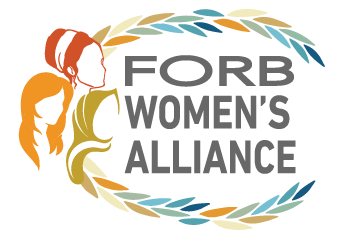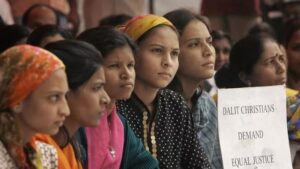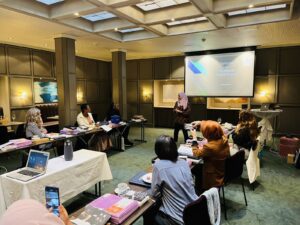Just as women face unique challenges in freedom of religion and belief (FoRB), the projects that seek to address those challenges also face obstacles, not least of which is having sufficient funding to operate. These funding obstacles include:
- Funding institutions often are siloed across the overlapping issues central to women and FoRB and may fail to view FoRB as a solution to problems women frequently face. For example, a funder will support human and women rights, or religious freedom as they define these issues, and may be unaware of the importance of FoRB for solving problems related to women’s poverty, equality, and empowerment.
- Funding institutions are subject to the effects of the culture wars: Some funders may perceive religious freedom, human rights and gender rights being at odds with each other because of cultural and political narratives and agendas.
- Male religious leaders are funding institutions’ usual go-to partners: Organizations that work internationally, including development funders and interreligious peacebuilders, often work with religious leaders because they believe these leaders can best influence the local environment. But these leaders usually are men. A funder might view such an approach as strategic, but it ignores women, without whom there can be no lasting success.
- Some funders may view religion/religious freedom as a taboo subject: In the West, and especially in some progressive spaces, some funders may be squeamish about supporting anything related to religion perhaps because they are trying to avoid controversies. But to achieve their end goal, whether it is economic empowerment for women or the provision of education or health services, it’s likely essential to achieving their goals to work with women in FoRB.
How do you, as someone running a project implementing creative and effective solutions, move past these obstacles to raise funds from institutional funders?
Basic fundraising skills, like making a clear ask and storytelling for impact, are necessary to raise money. But they may be insufficient to fund projects related to women in FORB because of challenges like those noted above. Because the issue of religious freedom is so central and can be so charged, it is especially important that you align your request for funding with what a funder already cares most about. Your first task thus is to find such a match.
Here’s the thing: no funder is trying to find a you-shaped grantee. Rather, funders are thinking about their impact through issue areas that they have defined in their strategic plans. They aren’t envisioning the creative solution you have proposed but which doesn’t quite fit into their plan. So, you have to demonstrate how your project fits under their labels.
I’ll use the UN’s Sustainable Development Goals (SDGs) as a frame here. FoRB Women’s Alliance highlights that five of the 17 SDGs align with this work: #4 Quality education; #5 Gender equality; #8 Decent work and economic growth; #10 Reduced inequalities and enhanced rights; and #16 Peace, justice and strong institutions.
You can use the Alliance’s platform and existing research to help advance your argument that initiatives that use a FoRB lens, just like your work, have real impact potential in these SDG areas. But if your project aligns with another of the SDGs, such as #3 Good Health and Well-Being, and you have found a funder working in your locale who cares about health care – go for it.
Once you have identified a potential funder, and you know which person there is doing the work, how it aligns with your efforts, and how much they normally give (for US-based foundations you can find their tax documents with the grants they have given on websites like ProPublica), you can reach out with a quick introduction something like these lines:
Dear Name,
I see you care about X, and we have this really amazing solution to X precisely because we work through the lens of religious freedom or belief (FoRB). FoRB is an important force in this community, and must be part of any sustainable solution. That’s why we are seeking to undertake this project, and here’s why I care about it, and why I’m seeking to do it now.
We’ve already done really amazing work on X using this strategy. [Add a two-sentence success story about X that is only possible through the lens of FoRB and how you work with it.]
I’d love to have a conversation about how we can partner to work on X together. To continue this work, we are looking for partners to support us with [a specific amount that falls within normal grant ranges for the institution you’re looking at]. If you have other suggestions for a partnership, I would be eager to hear your ideas. Would you be willing to meet with me to chat about it next week?”
Your letter or email should be in your own words of course, but your final product:
- Is short and readable.
- Shows you’ve done your research, and you already know that this funder, ideally a specific person, has a concern for which you have a solution.
- Owns upfront the issue of FoRB, showing why it’s important to address the concern you both share through the lens of religious freedom, and demonstrating your knowledge and expertise. If you are writing to a faith-based or religious-freedom funder, then lean a bit more into your expertise about the importance of religion or belief for the community and the importance of religious freedom as a human right that is key to achieve the goals you articulate.
- Uses storytelling for impact with tools published by FoRB Women’s Alliance. These can be distilled as:
- Why this project?
- Why are you doing it?
- Why now?
- Makes a clear monetary ask within the normal range for the organization you’re approaching and requests a meeting with a suggested day/time to discuss your request.
Once you start connecting with a funder, seek to build a real, human relationship. Foundation staff aren’t cash machines – they are people working hard to do good things in the world. The more you lean into the human relationship, the more you can understand them as people and hear what they are telling you about their funding institution.
There is a lot more to say about fundraising and grants management strategies that won’t fit in here, but this basic approach, by highlighting the essentials, can help those starting out as well as those with more experience.
There’s some more good news too. Institutional funders are not the only funding source out there.
There’s a growing field of crowdsourcing platforms through which organizations worldwide can reach out directly online to individuals. These crowdsourcing platforms can provide funds relatively quickly, and may not present the same obstacles as institutional funders.
The basics of fundraising communication still apply though: make a clear ask and tell a good story about why this project, why you are doing it, and why you are doing it now.
There now are many crowdfunding sources, including ones that offer connections to specific audiences, including to specific religious communities and communities interested in FoRB. In these spaces, you may be able to lean more deeply into the FoRB aspects of your work than with some institutional funders. Just remember that institutional funders who want to learn more about you will be able to see anything you post in these spaces.
Crowdfunding platforms usually take a small percentage – between 2 and 5 percent – of all donations to keep their lights on. Rules vary, and you may have to check whether they work with organizations outside of where they are based. Also, be aware that tax laws may differ for donors who live in states other than where you reside. So don’t promise that donations are tax deductible.
Crowdfunding platforms with various specialties include:
- Mighty Cause, a secular platform used by many nonprofits, also has a specialty in faith-based fundraising.
- Waygiver, a Christian organization, platforms requests for missionary work and church-planting as well as other charitable work that serves a wider population.
- Launchgood, specializing in Muslim-led projects or projects in Muslim-majority areas, reaches Muslim givers across the globe, and holds special giving pushes during Ramadan and on other holy days.
- Jewcer serves Jewish communities and supports Jews around the world, as well as projects rooted in the Jewish value of Tikkun Olam.
If you are spending most of your days immersed in the hard and often heartbreaking work of women and FoRB, it can be hard to take the time and have the energy and focus to step away from your daily responsibilities to raise funds. But raising funds ensures that you can continue your work.
I hope the strategies distilled here can help you take the first steps to tell your story, make your ask, develop relationships with funders to ask for and receive grants, and launch a successful crowdfunding campaign. You make the world a better place. And you can take these steps so that donors see you and support your work.
Allison K. Ralph, is the Founder and Principal of Cohesion Strategy








































